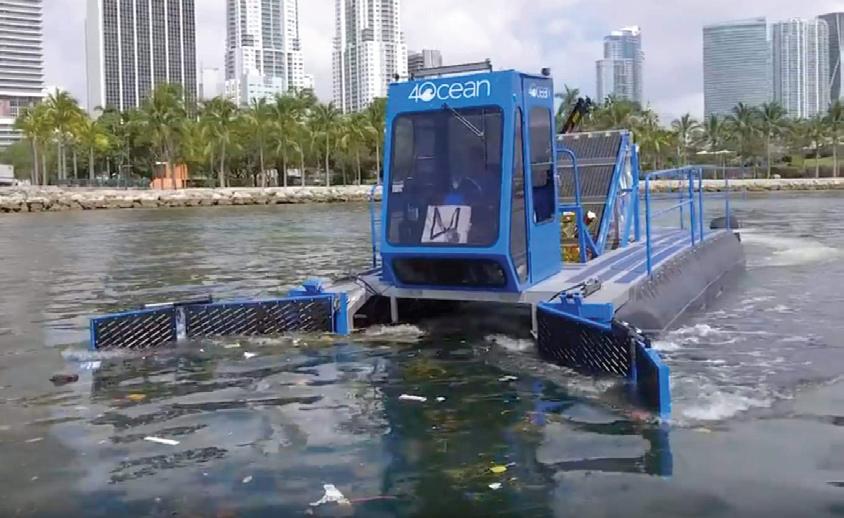
6 minute read
Gift Prospect Modeling And Prospect Research
Gift Prospect Modeling and Prospect esearch - Part ne
ow to Dispense with the ype and Find Power in Donor Data
By Matthew ubins C hances are good that your non-profit is ready to use major gift prospect modeling and prospect research to help you find new major donors. You may already be crunching those numbers. But what you might not know is just how powerful these crucial practices can really be, or where the hype might outpace the reality. What’s vital is to take a new, or closer, look at how they will help your nonprofit catapult the output and efficiency of your major gift officers.
Part 1a - Major gift prospect modeling These days there is more awareness of artificial intelligence and machine learning than ever before. Regrettably, with increased awareness comes a high level of hype. Companies that sell products based on these statistical techniques will give you the impression that their techniques are revolutionary and will try to convince you their products are the only ones to provide you with the benefit from such techniques. Also, marketing from such companies tends to embed an impression that lots of data is needed to make worthwhile the use of such algorithms. As a data scientist who works in the non-profit sector, I wanted to clear the air on this topic.
Let’s start with a quick working definition of the subject matter. Major gift prospect modeling is the practice of using advanced statistical techniques to assign all your donors with a score (usually from 1-10, or 1-100) on the basis of how much they look like a major donor. To create the score, the statistical algorithm needs a sufficient number of past examples of high level giving so it can learn what to expect from your donors. Please don’t expect the modeling to definitively uncover $20,000+ donors if you’ve never had them.
Would you believe that even smaller non-profits can benefit from modeling? I recently scored the database of a non-profit that didn’t even have 5,000 active donors! Thankfully, there were a couple of tables in their donor database where the data was reasonably clean, allowing me to create a very useful major gift prospect model. The key criterion then is whether or not the non-profit consistently records data on their donors and donor behaviour. Of course, the more you track about your
donors, the better. Obviously, larger non-profits can certainly benefit from this as well.
Now, let’s talk about donor data requirements. Donor data sources that can be useful for creating major gift prospect models include, but are not limited to: Biographical details ❯
Gift history ❯
Solicitation history ❯
Contact preferences ❯
Event participation ❯
Volunteerism ❯
Connection to the cause ❯
Demographics ❯
Bear in mind that not all these data sources are needed for modeling. Going back to the example of the small non-profit I mentioned, the only data sources they were able to share with me were biographical details and gift history. I was able to do a demographic append using Canadian Census data. That made three data sources altogether.
After roughly three weeks, the project should be completed. The three major deliverables of such a project are: The model summary and insights report1.
The model summary and insights report is a document that summarizes the data characteristics that were used to create the major gift prospect model score. Think of these characteristics as helping to paint a picture of what constitutes a high level donor for your non-profit. My reports always start with a simple listing of those characteristics, along with how important each was in building the model. Subsequently, my clients love when I show them graphs that explain more about how these characteristics are correlated with high-level giving. For example, a graph showed my client that donors whose first gift was $100 or more were over two times as likely to give at a high level compared to other donors.
Another interesting example that came out of the summary and insights report was a different non-profit I worked with who learned that donors who had given at least $2,500 through monthly giving were much more
likely to go on and subsequently give at least $10,000+ over the ensuing five year period. This insight was of major strategic value to them. They realized that their monthly giving program represented a key pipeline for them of major giving prospects. A return of the actual donor data, 2.
scored and ranked (from 1-10, or 1-100), along with some measure of philanthropic capacity Of course, the end goal of this project is to figure out which donors have the highest likelihood of responding to major gift solicitation, as well as the means to make such a donation. To get those identities, a file needs to be returned where each row is a donor (represented by an ID), and the columns contain information such as model score, rank, measure of philanthropic capacity, as well as any prospect segments that were built in the process. I like to divide up my clients’ databases into 4 segments, based on whether their donors are high vs. low on the model score, and high vs. low on philanthropic capacity. Instructions on how to re-score your 3.
donors on a regular basis (optional) Where a client has the internal staff expertise to do so, it’s ideal to instruct the database person on the client’s end of things on how to re-score their donors. This means passing new/updated donor data through the same model that was built by the data scientist, and getting new scores. With each passing year, new behaviours or characteristics mean your donors might have increased or decreased their likelihood of giving at a high level to your organization. Re-scoring helps reflect that reality.
Part 1b - The really hard work begins Once the project is done and everyone’s happy with the quality of the work, you need to start the work of actually soliciting the donors highlighted by the model scores. Please note that the model scores aren’t enough to inform your major gift officers. There’s all sorts of personal
information that major gift officers should try to research on their prospects before approaching them and starting the lengthy process of asking for high level donations. This includes everything from family characteristics, employment, income, personal preferences, etc.
Major gift solicitation is time consuming, but at least modeling drastically cuts down on the time the organization is spending looking for the best prospects.
Once your campaign is finished, you’re going to want to measure the success of using a major gift prospect model. I can think of at least two methods for doing this:
If using the scores on all prospects, 1.
examine the rate at which your major gift officers move prospects along the pipeline from identification qualification cultivation successful solicitation. How much higher or lower are these rates compared to prior periods? That could be very telling of how much more or less efficient your team is thanks to the scores. For larger non-profits: break up your 2.
prospect database into two portions. On one portion, use the scores to move prospects through the pipeline, whereas on the other portion you do major gift prospecting like you always have. How do the above mentioned rates compare between the two portions?
I hope I’ve explained the process and value of major gift prospect modeling better than you previously understood it. The second part in this series will help you better understand how prospect research works and its benefit to organizations small and large.
Ma he ns is the Founder of Donor Science Consulting. Watch for Part 2 of his column in next issue.









